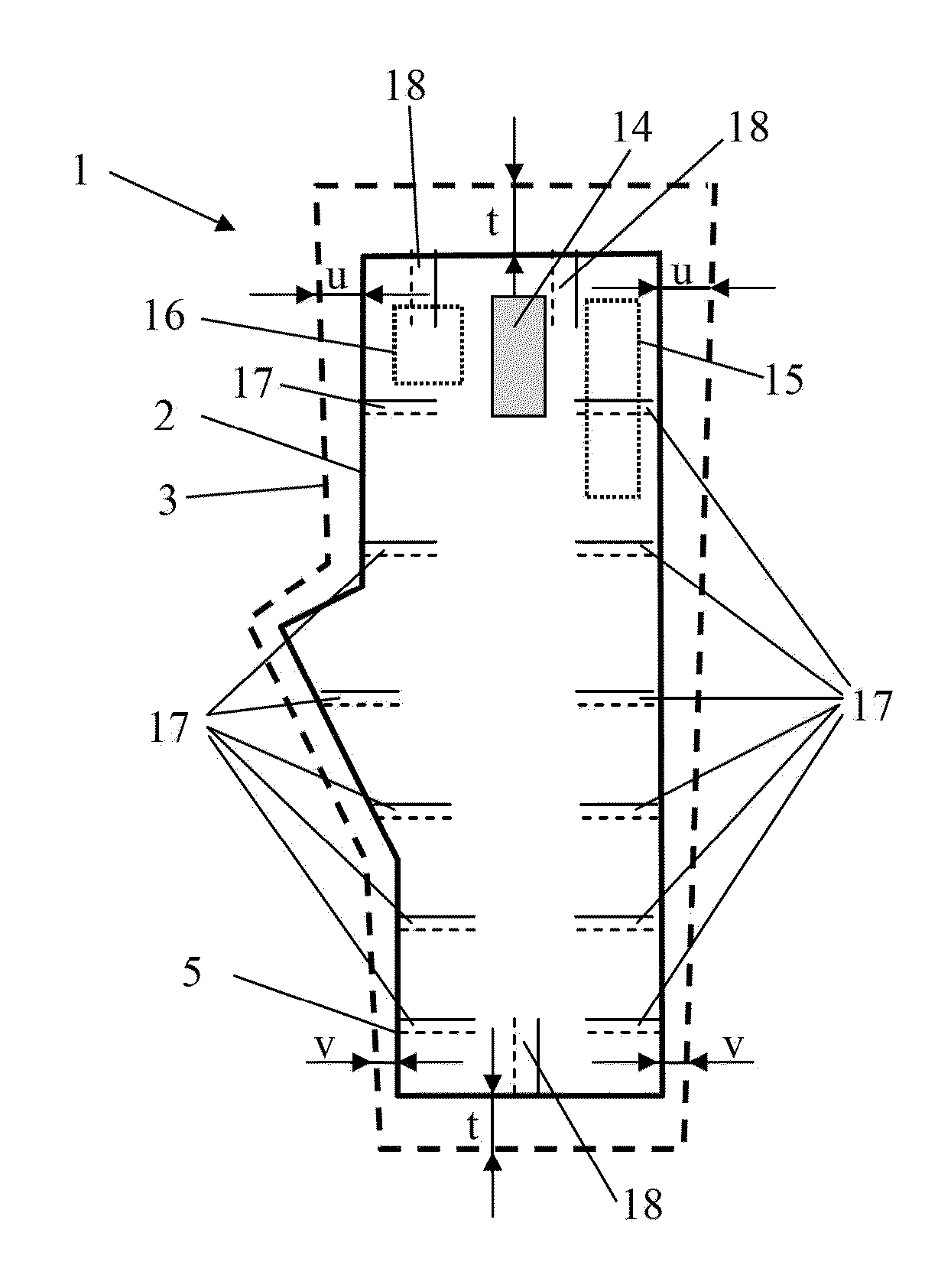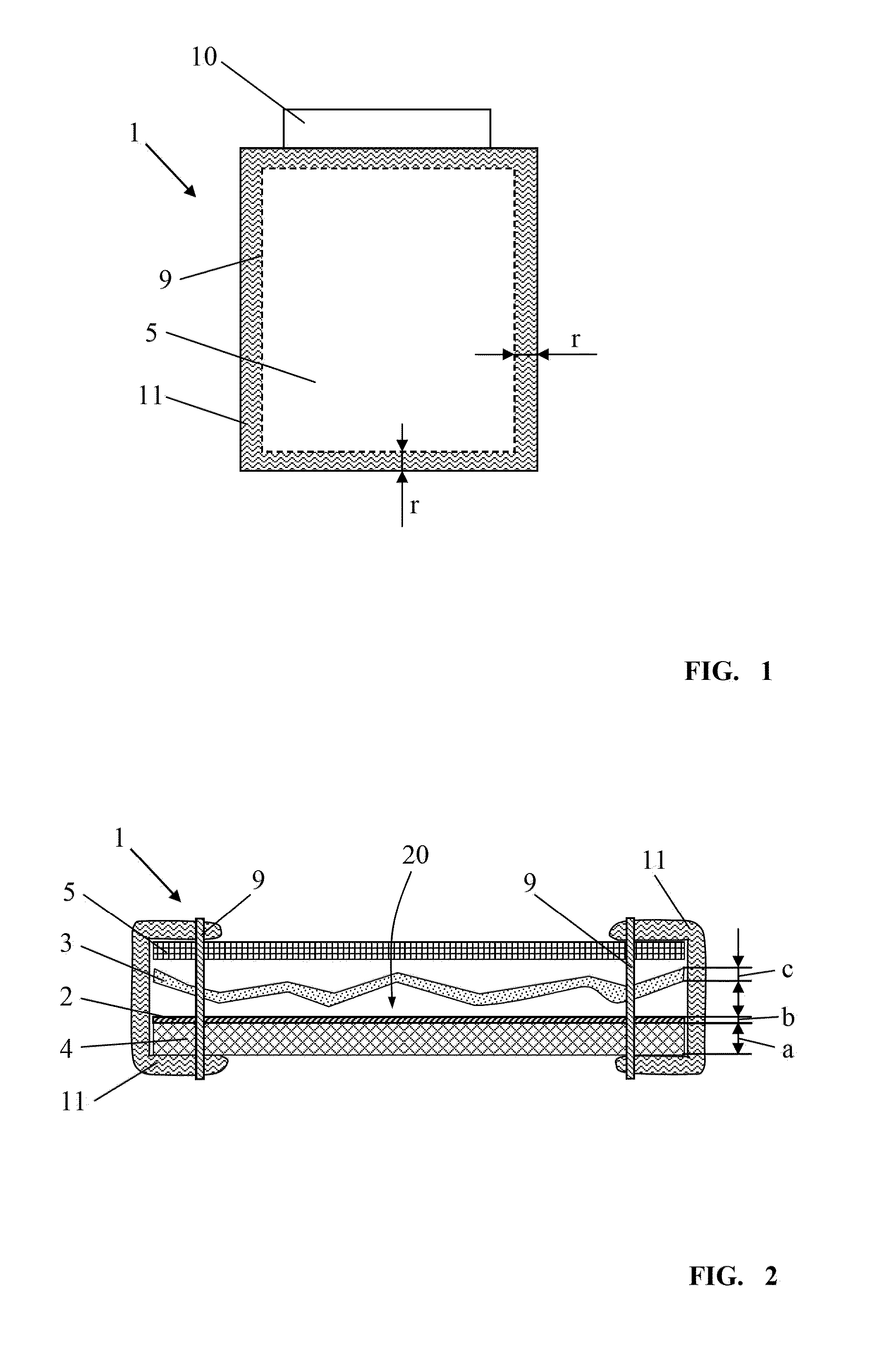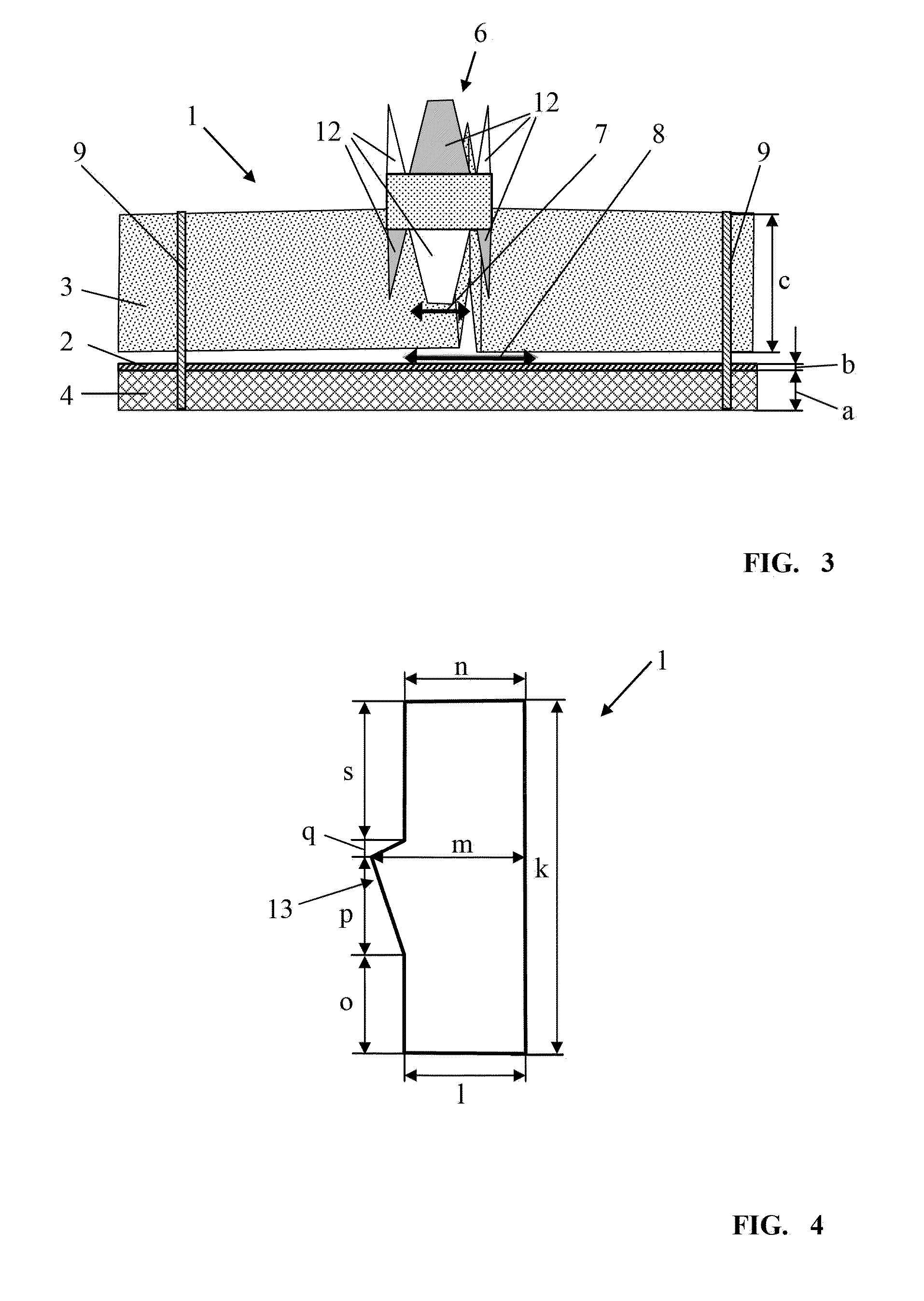Protective Element
a protective element and textile material technology, applied in the field of protective elements, can solve the problems of cutting teeth affecting the clothing of users, affecting the and affecting the use of protective clothing, etc., to achieve the effect of improving wear comfort, easy production and forming, and high comfort of wearing a protective element composed of textile materials
- Summary
- Abstract
- Description
- Claims
- Application Information
AI Technical Summary
Benefits of technology
Problems solved by technology
Method used
Image
Examples
Embodiment Construction
[0028]FIG. 1 shows an exemplary embodiment of a protective element 1 according to the invention. In FIG. 1, the embodiment of the protective element 1 has a substantially rectangular contour. The shape of the protective element 1 depends on which body part of the user is to be protected and can deviate from the illustrated rectangular cross-sectional shape. The protective element 1 is comprised of several material layers that are resting flat on each other. The material layers are connected to each other by means of at least one fastening location 9. The fastening location 9 is a seam in the illustrated embodiment. The yarn which is used for the seam extends in the illustrated embodiment circumferentially at an edge spacing r that is in particular constant and amounts to approximately 1 cm relative to the outer boundary of the protective element 1. Expediently, on the outer edge of the protective element 1 a bordering tape 11 is arranged. The bordering tape 11 encloses all material ...
PUM
| Property | Measurement | Unit |
|---|---|---|
| thickness | aaaaa | aaaaa |
| thick | aaaaa | aaaaa |
| thickness | aaaaa | aaaaa |
Abstract
Description
Claims
Application Information
 Login to View More
Login to View More - R&D
- Intellectual Property
- Life Sciences
- Materials
- Tech Scout
- Unparalleled Data Quality
- Higher Quality Content
- 60% Fewer Hallucinations
Browse by: Latest US Patents, China's latest patents, Technical Efficacy Thesaurus, Application Domain, Technology Topic, Popular Technical Reports.
© 2025 PatSnap. All rights reserved.Legal|Privacy policy|Modern Slavery Act Transparency Statement|Sitemap|About US| Contact US: help@patsnap.com



